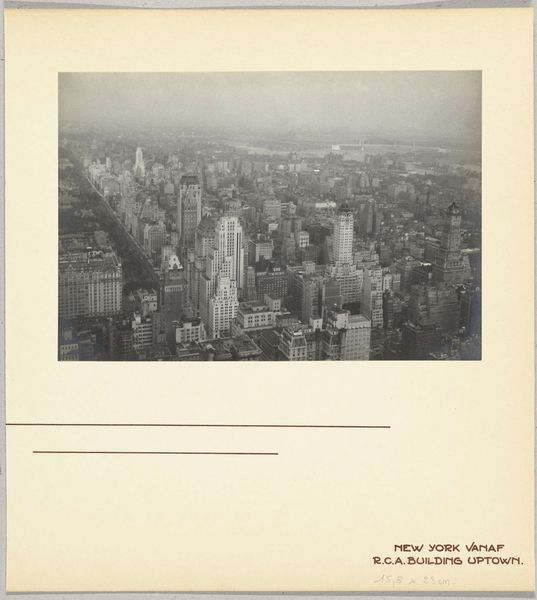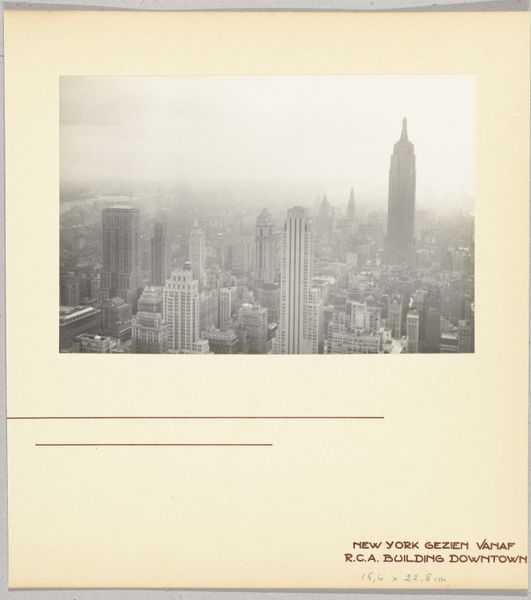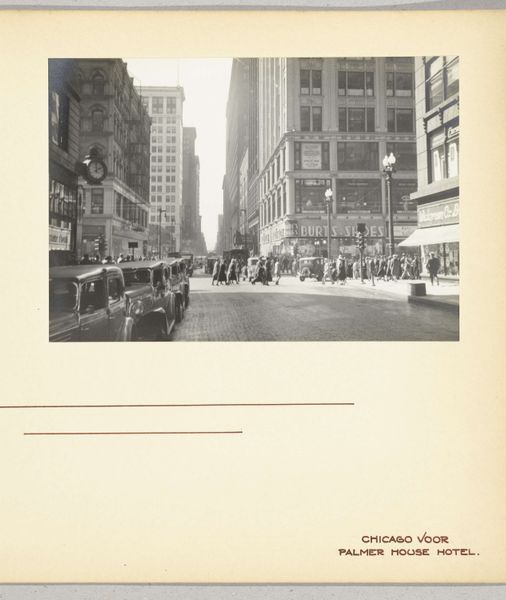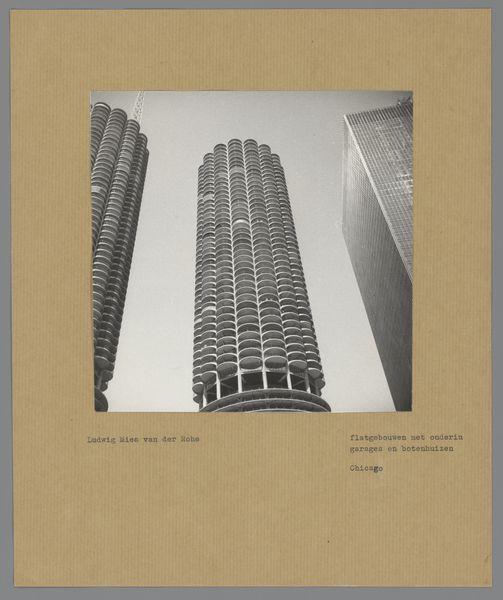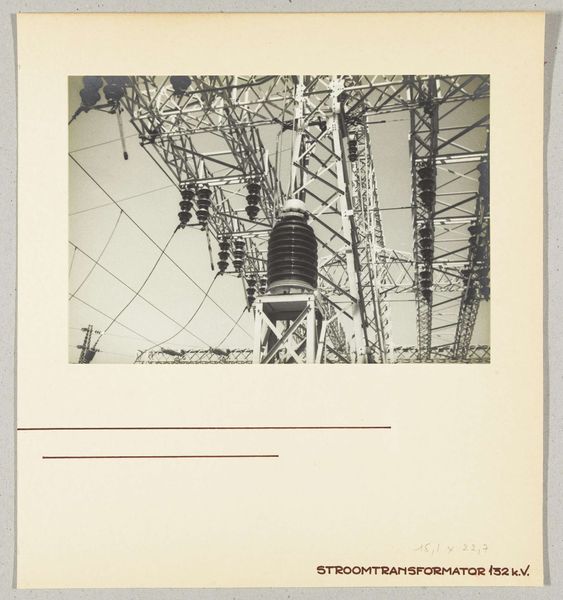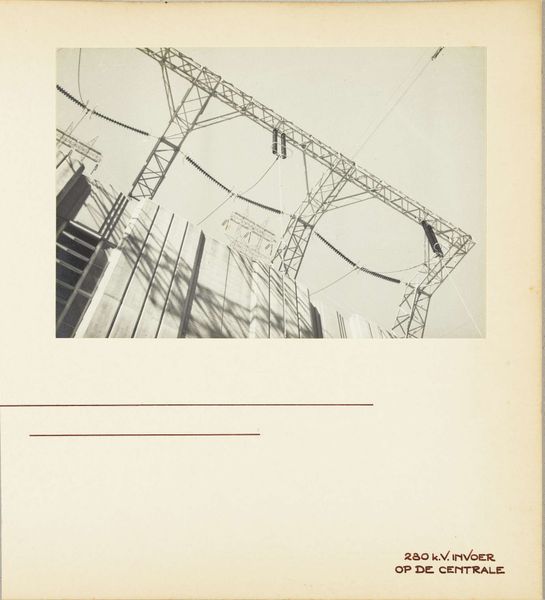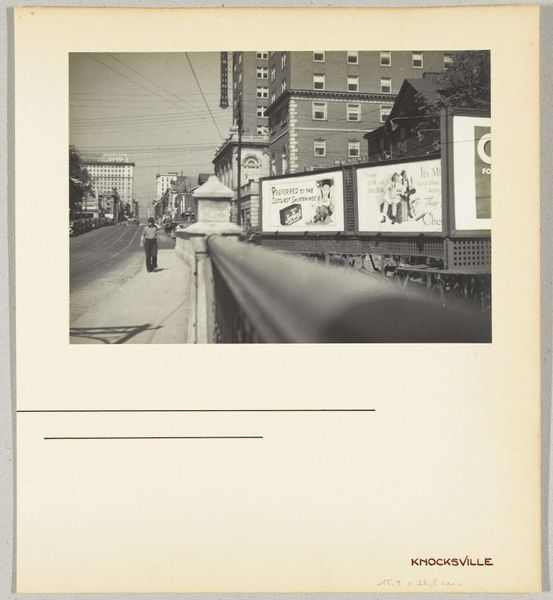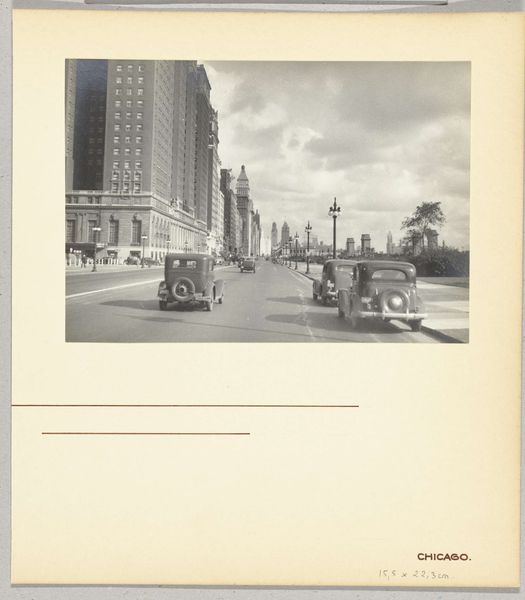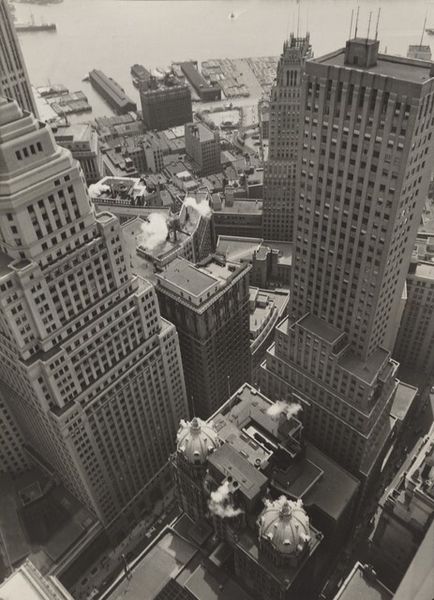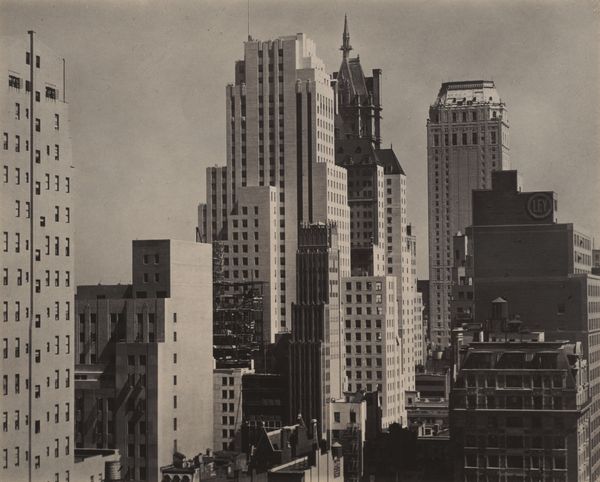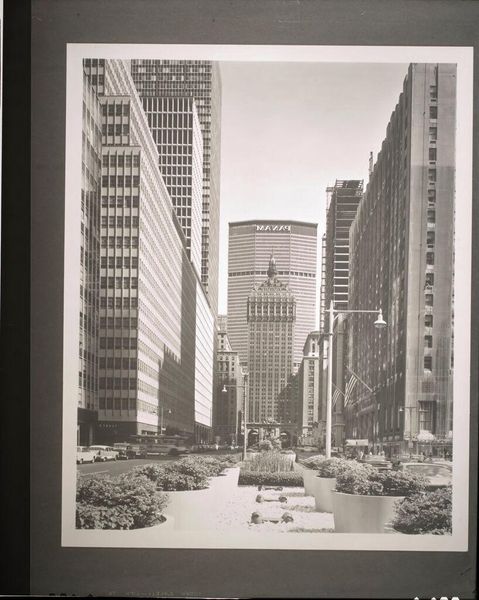
New York gezien vanaf het R.C.A. Building (tegenwoording GE Building), onderdeel van het Rockefeller Center, Verenigde Staten 1936
0:00
0:00
photography
#
precisionism
#
photography
#
cityscape
#
modernism
#
realism
Dimensions: height 157 mm, width 225 mm, height 315 mm, width 286 mm
Copyright: Rijks Museum: Open Domain
Curator: This photograph, titled "New York Seen from the R.C.A. Building," was taken in 1936. The viewpoint gives us an intimate perspective on Manhattan’s architecture. What strikes you most? Editor: The sheer density! The relentless geometry. It’s a powerful statement about urbanization, a human imposition on nature through concrete, steel, and glass. A real monument to materials and industry. Curator: Absolutely. Looking at this image from the perspective of the 1930s, we see the embodiment of the Precisionist aesthetic, glorifying industry, and almost deifying technology through composition and vantage. There’s a distinct utopian drive underlying its sharp, impersonal realism. Do you perceive an echo of the socio-economic context? Editor: Undeniably, you see a complex landscape of labor relations built into that urban fabric. The human energy required to manifest such verticality. Each brick speaks to its maker; each window implies someone at their desk. Think about the labor put in to procure materials! Curator: Exactly. These towers not only symbolize economic aspiration, but they also manifest unequal distributions of wealth and power—this cityscape becomes a terrain marked by historical oppressions but also aspirations. A reflection of the American Dream, both achieved and deferred. And of course gender becomes central as cities historically offered space to create alternative structures of living. Editor: Indeed. Thinking of that relationship reminds me that photographs themselves depend on chemical processes, industrial manufacturing and material resources. The art's physical reality, a captured moment in time rendered tangible by material, gives depth to its meaning. Curator: Very well put. Overall, revisiting “New York Seen from the R.C.A. Building” offers insights into the evolving interplay of urban identity and artistic practice. Editor: For me, its enduring value comes from reminding us about our built environments—how their production echoes in our lives.
Comments
No comments
Be the first to comment and join the conversation on the ultimate creative platform.
